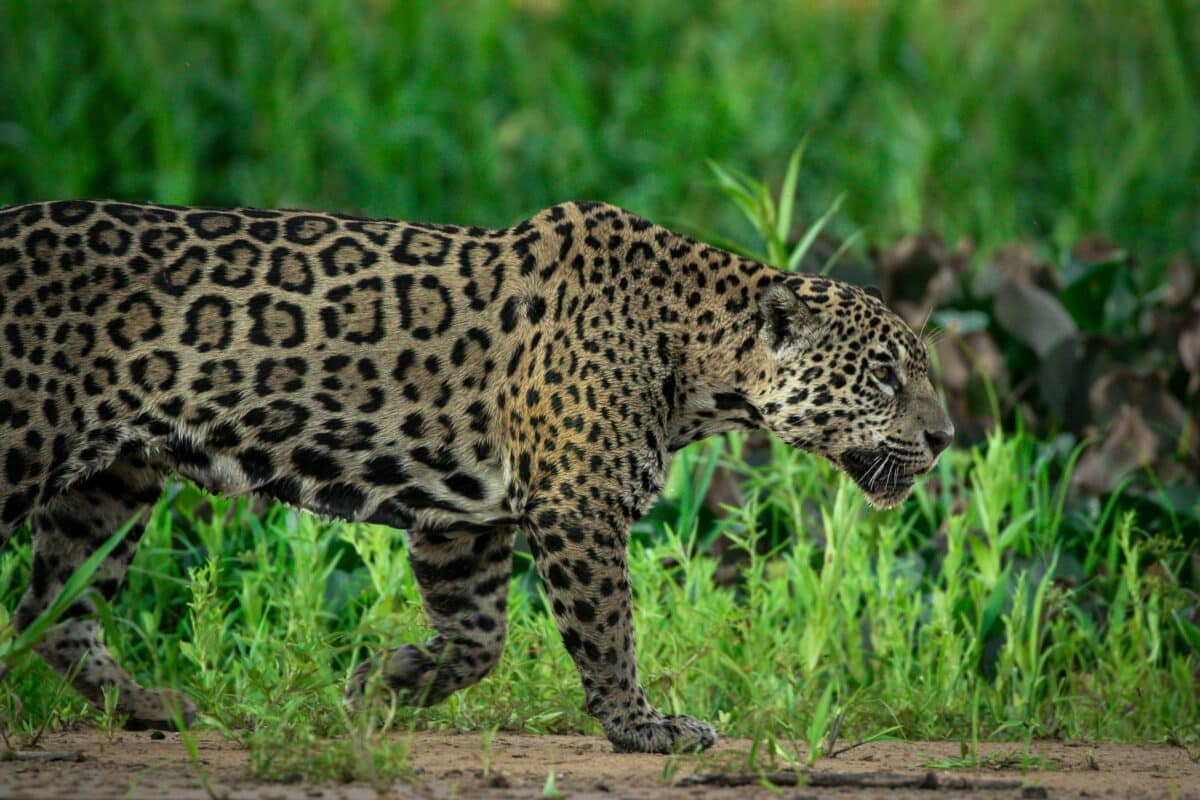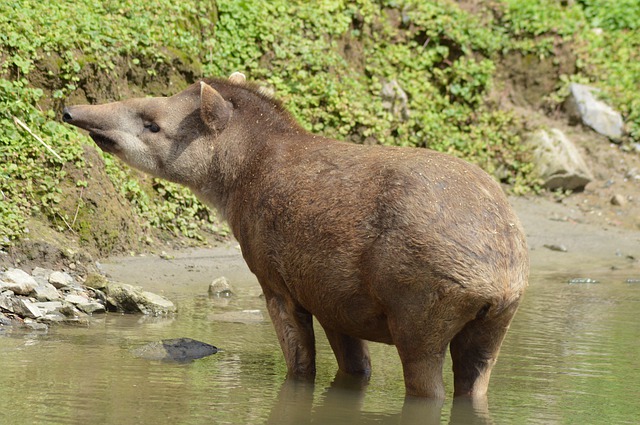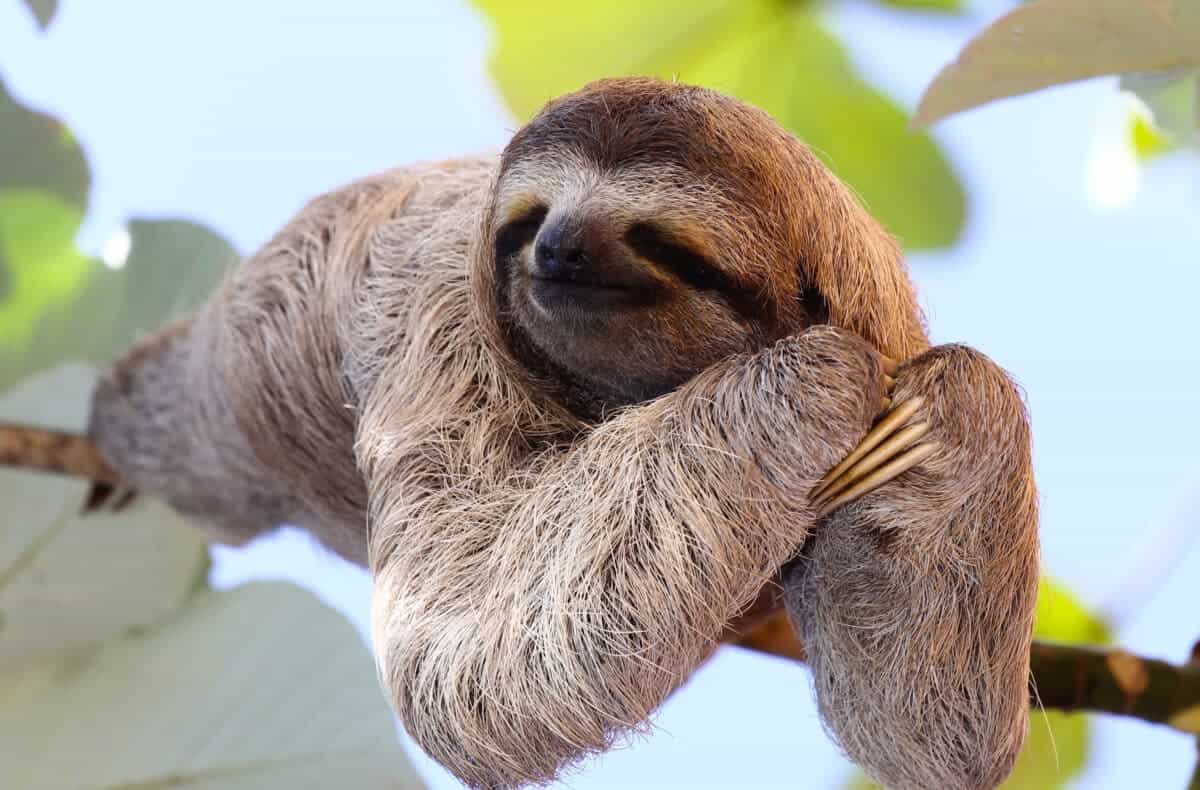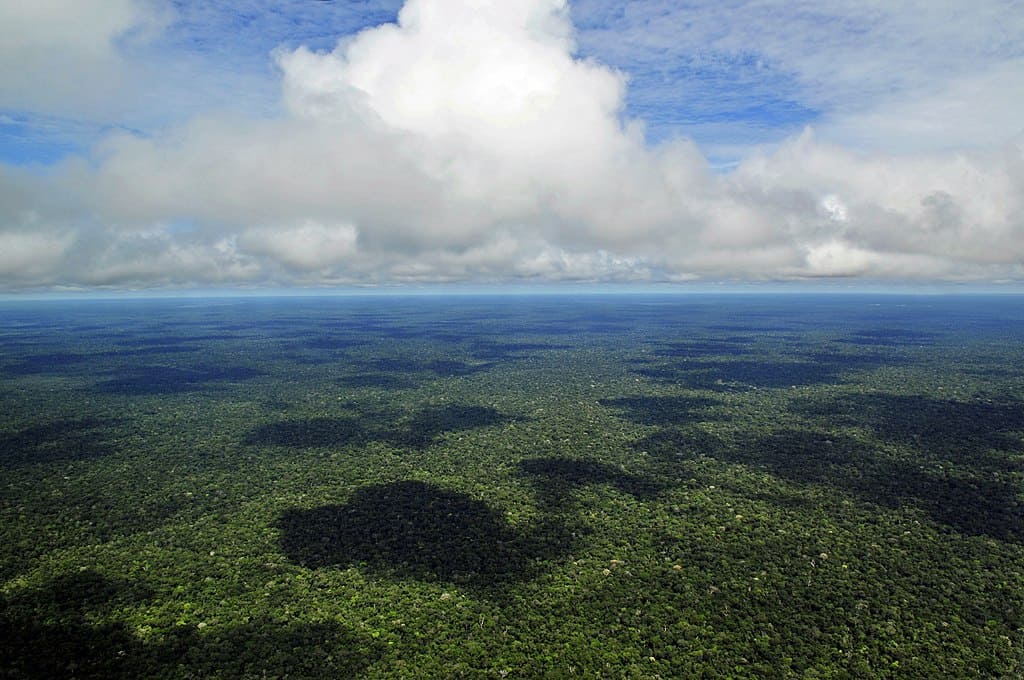Welcome to the Top 10 Endangered Animals in the Amazon Rainforest.
The Amazon Basin, hosting the world’s largest rainforest, occupies about 40% of South America. This region is a complex mosaic of diverse ecosystems and vegetation types, including rainforests, seasonal and deciduous forests, flooded woodlands, and savannas, shaped by environmental conditions and historical human activities.
The basin features the Amazon River, the most voluminous river globally in terms of discharge and the world’s second-longest river after the Nile. This river system includes over 1,100 tributaries, with 17 extending more than 1000 miles. Notably, two of its tributaries, the Negro and the Madeira, exceed the Congo River in volume. The Amazon River plays a crucial role in sustaining the forest and has significantly influenced the evolution of its rainforests.
However, wildlife in this region is facing a decline, underscoring the importance of recognizing and addressing the issue of endangered species in the Amazon rainforest. The list of endangered animals extends beyond the ten mentioned, reflecting the broader environmental challenges faced by this vital ecosystem.
Click below to jump to any section of the top 10 endangered animals in the Amazon rainforest:
#1 Jaguar

The jaguar, an endangered species in the Amazon Rainforest, is South America’s largest cat. It can grow up to 2.5 meters in length, including its tail, and weigh as much as 120 kilograms. Jaguars are solitary, nocturnal, and skilled swimmers.
This species is the only member of the Panthera genus native to the Americas and is a significant concern for conservation in the Amazon, being among the top 10 endangered animals there. Jaguars can reach a body length of up to 1.85 meters and weigh up to 96 kilograms. They are characterized by a coat ranging from light yellow to tan with spots and rosettes, although some exhibit a melanistic black variation.
Jaguars have a powerful bite, enabling them to break through the hard shells of turtles and tortoises. Their unique hunting method involves biting through the skull of mammalian prey to deliver a fatal blow to the brain.
#2 Golden Lion Tamarin

The Golden Lion Tamarin, a monkey native to Brazil, weighs around 800 grams and is notable for its striking orange mane. The species got its name in 1754 when one was presented to Madame de Pompadour, who referred to it as ‘le petit lion doré,’ meaning ‘little golden lion.’ These monkeys inhabit a small 60 square mile area in Brazil.
Efforts have been made to reintroduce them to regions near Rio de Janeiro. They reside in marshy and coastal areas, which are among the most populated in Brazil, leading to habitat fragmentation. This has hindered their movement across the rainforest for mating, contributing to their low population numbers.
Golden Lion Tamarins, weighing about one pound, are recognized by their orange, rusty fur and mane-like facial hair. They are adept at climbing trees and nest in tree cavities. Active for about twelve hours a day, they travel in family groups of two to nine. Their omnivorous diet includes insects, fruits, small reptiles, and birds. In captivity, female competition for male attention can be aggressive.
Offspring typically arrive in pairs, and group members share the responsibility of caring for them, with males often carrying the infants most of the time.
#3 South American Tapir

This animal, along with jaguars and giant otters, is one of the top three creatures tourists hope to see in the jungle. Despite their hefty appearance, these hoofed mammals are quite nimble and feed on mineral-rich earth licks in the jungle. In Peru, they are at risk of extinction, and their population is not significantly better in other areas. The main threats include habitat loss due to logging and encroachment, as well as illegal hunting.
Found in lowland regions of Northern and Central South America, these mammals are typically located near salt and water sources. Little is known about them, and researchers are using camera traps and footprint tracking to study and monitor their populations. They reproduce infrequently, taking a long time before giving birth for the first time, which hinders population recovery if disturbed.
All four species of this mammal are considered endangered or vulnerable, with their numbers in South America declining over the years. Scientists believe that out of the nine known species, five have already become extinct. Their habitats are increasingly being lost to deforestation, and they are hunted for their meat.
#4 Giant Otter

Giant otters, among the most adorable creatures in the Amazon Rainforest, can reach up to 1.7 meters in length. They inhabit the rivers flowing through the jungle and are adept at detecting prey movements in the water thanks to their sensitive whiskers and keen vision. Primarily feeding on fish, they play a crucial role as predators in their ecosystems.
The main threats to giant otters include illegal hunting, habitat destruction, water pollution, and local fishing activities. Peru has taken steps to protect this species in various national parks, including Manu National Park and the Pacaya-Samiria National Reserve. Adult giant otters measure between 1.5 to 1.8 meters and weigh 22 to 32 kilograms.
As semi-aquatic mammals, they require both land and water for survival. They are highly social, forming groups of up to 10, consisting of mating pairs and their offspring. A litter can have up to six pups, with the sub-adults in the family acting as caretakers for the younger ones.
Giant otters can live up to 10 years in the wild and are known for their diverse range of up to nine vocalizations. Their dark brown fur features a unique white or beige patch on the throat and chest, serving as an individual identifier. Their diet is carnivorous, mainly consisting of fish. While they have no natural predators, they compete for food with species like the black caiman, the neotropical river otter, and humans. This competition, combined with other threats, places them among the top 10 endangered animals in the Amazon rainforest.
#5 Uakari Monkey

The Uakari is a small monkey species native to South America’s tropical rainforests, often found in humid jungles near water. This monkey is especially recognized for its distinctive bald face, which varies in color from pink to dark red.
There are four main types of Uakari: the Red (Bald) Uakari, the Black Headed Uakari, the Ayres Black Uakari, and the Neblina Uakari. While they are similar in appearance, they vary slightly in fur color and geographic location. The name “Uakari” (pronounced “wakari”) is believed to be derived from indigenous languages.
The Uakari inhabits moist, tropical rainforests exclusively in the Amazon River Basin, across Brazil, Peru, and parts of southern Colombia. The various species are primarily distinguished by their specific habitats. For instance, the White Uakari is found in northwestern Brazil, the Golden Uakari near the Brazil-Peru border, the Red Uakari along the Brazil-Colombia border, and the Pale-Backed Red Uakari slightly further east.
These monkeys typically reside in jungles bordering freshwater sources like rivers, streams, and lakes. They prefer partially-flooded forests, either permanently or seasonally, over areas near large rivers. Despite their presence in the Amazon, Uakaris are listed among the top 10 endangered animals in the Amazon rainforest due to various threats.
#6 White Cheeked Spider Monkey

The White-Cheeked Spider Monkey, a type of New World monkey endemic to Brazil, typically travels in small family groups of two to four, which are part of larger groups of up to three dozen. This monkey’s diet includes leaves, flowers, fruits, bark, honey, and small insects, playing a crucial role in seed dispersal for forest trees. Females have a gestation period of 230 days.
The population of this species is declining due to habitat loss from soybean farming, deforestation, and road construction. Additionally, they are hunted for food, being considered a delicacy. As a result, the International Union for Conservation of Nature (IUCN) has classified it as “endangered.”
Spider monkeys come in various colors, including black, brown, and white, and they inhabit the upper canopy of the tropical rainforest. The White-Cheeked Spider Monkey was listed as endangered after a 2008 assessment revealed a 50% population decrease over three generations, mainly due to habitat loss and hunting. The situation is likely to worsen due to expanding soybean cultivation and the destruction of their habitat for major highways and extensive deforestation. This has led to their inclusion in the list of the top 10 endangered animals in the Amazon rainforest.
#7 Hyacinth Macaw

These large blue parrots, found in South America’s eastern region, are notable for their size, measuring about one meter in length, making them one of the largest parrot species in the world. They are most commonly found in New Zealand and weigh around 3.5 kg. Habitat loss and the demand for them as pets have led to a decline in their population, further exacerbated by the bird trade. This is why they are listed among the top 10 endangered animals in the Amazon rainforest.
In an unusual trait for brightly colored birds, both male and female macaws look alike. The Hyacinth Macaw, found in Brazil, Bolivia, and Paraguay, is the largest of all parrot species, measuring 95-100 cm in length. The Red Macaw, a well-known New World parrot, is renowned for its striking red, yellow, and blue feathers contrasted with a bare white face that can flush when excited.
These birds, recognized by their distinctive slow wingbeats and long tails, are often seen in pairs, family groups, or flocks, traveling to and from roosting and feeding sites. Known for their sociable nature, red macaws are frequently heard calling in flight with loud, metallic shrieks.
#8 Sloth

Sloths, unique to the Amazon, are renowned for their slow movement, traveling at a maximum speed of about 0.24 km/h and sleeping for around 20 hours a day. This is due to their inability to maintain a constant internal body temperature, which varies between 24°C and 33°C. Inhabiting the tropical rainforests of Central and South America, sloths move through the canopy at about 40 yards per day, feeding on leaves, twigs, and buds.
Their exceptionally low metabolic rate means they spend 15 to 20 hours a day resting. Surprisingly, these long-armed creatures are also adept swimmers, occasionally descending from their treetop habitats for a swim. Young sloths learn what to eat by licking their mothers’ lips, and all sloths consume cecropia leaves.
Two-toed sloths have an omnivorous diet, consuming insects, carrion, fruits, leaves, and small reptiles, covering up to 140 hectares (350 acres). In contrast, three-toed sloths are primarily herbivorous, eating leaves from only a few tree species and processing their food more slowly than any other vertebrate. Despite their unique adaptation to their environment, sloths are listed among the top 10 endangered animals in the Amazon rainforest due to various threats.
#9 Pink Amazon Dolphin

The Amazon pink dolphin, also known as boto, primarily inhabits freshwater lakes and rivers in the Amazon rainforest and parts of the Orinoco River. It is one of the five existing freshwater dolphin species globally. In the Amazon region, including Peru, this species faces the risk of extinction.
The main threats to their survival include the construction of dams, waterways, and the alteration of natural river flows. In some areas, these dolphins are classified as vulnerable due to dams that isolate and endanger certain populations, along with other hazards like the pollution of rivers and lakes. These river dolphins serve as indicators of the health of the river systems they inhabit. A thriving dolphin population suggests a healthy freshwater ecosystem, while a declining population signals potential ecological problems.
The World Wildlife Fund (WWF) is a leading organization working to conserve all river dolphin species worldwide. Through its River Dolphins Initiative, WWF collaborates with governments, communities, and other partners in countries with river dolphin populations. This collaboration aims to modify policies and practices, address direct threats like bycatch and infrastructure development, protect habitats, and promote scientific research.
#10 Common Spider Monkey

The Black Spider Monkey, also known as the Guiana or Red-Faced Spider Monkey, inhabits the regions north of the Amazon River in eastern South America. It is one of the seven species of spider monkeys in Latin America and ranks among the largest primates in South America. This species plays a crucial role in the tropical rainforest ecosystem, especially in seed dispersal, which is vital for the continued growth and health of their forest environment.
These monkeys are known for their intelligence, alertness, and agility, but they can also be noisy and aggressive. The entire species of spider monkeys, including the Black Spider Monkey, faces the threat of extinction primarily due to hunting and habitat loss. Despite significant conservation efforts, the Black Spider Monkey remains listed among the top 10 endangered animals in the Amazon rainforest.
Summary on top 10 Endangered Animals in the Amazon Rainforest
Again we see the effects of an irresponsible apex predator; humans. We have had, and continue to have the most negative effect on wildlife. These animals play integral roles in the balance of a fine tipping point we are beginning to change.
We must continue with conservation efforts and sustainable practices to support these animals. And not drive any more species into extinction.
If you enjoyed reading the above, check out the top 10 most endangered animals in India and the top 10 longest living animals or these 15 Fascinating & Weird Animals in the Amazon Rainforest next!
Join our Forum for free today!

- These are The 5 Largest Great White Sharks Ever Recorded - July 19, 2024
- The Surprising Benefits of Big Game Hunting - July 18, 2024
- $100k+ Hunting Experiences The Most Expensive Animals to Pursue - July 17, 2024


